| |
| |
| Analysis of a Malicious PDF File |
| Author:
Amit Malik aka DouBle_Zer0 |
| |
| |
| |
|
|
|
| |
| |
| |
|
|
| |
| |
|
Yesterday, I downloaded a malicious PDF file for my regular
analysis. I found something strange in the PDF file than the other
malicious PDF files. The file was using a different kind of
technique and I was not aware about it. But after some googling I
found that the same technique was exposed in 2010 so it was not a
new technique.
|
|
|
 |
|
|
|
In this article, I will discuss on this particular malware method
and showcase how we can easily unearth the same using the beautiful tool
called PDFStreamDumper [Reference
1]. |
|
|
|
|
|
|
|
| When I opened the file in PDFStreamDumper , I got this following structure: |
| |
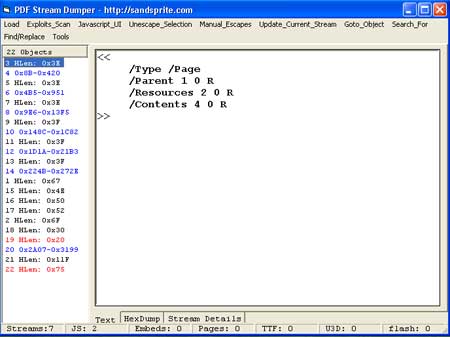 |
| |
So we can clearly see that object 19 and 22
contains some javascript (because in PDFStreamDumper if any object
contains JavaScript it will be displayed with red colour. )
If we
look into object 19 we get this: |
| |
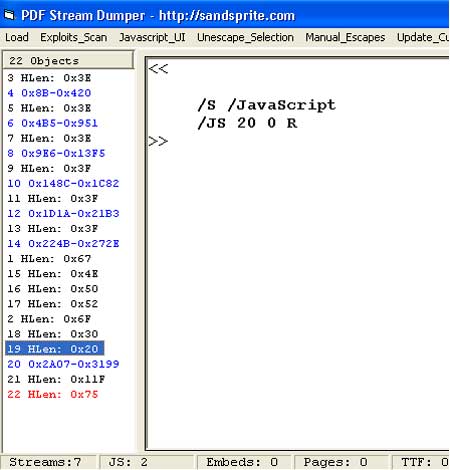 |
| |
| |
| |
| |
Now inspecting deeper, wee can see that object 20 contains actual
JavaScript stream.
Let us click on the object 20 on the left side
to see its real contents as shown below. |
| |
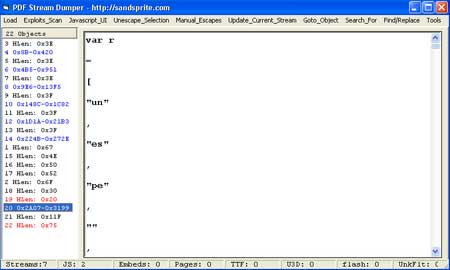 |
| |
As we can see from the figure that it contains big chunk of mangled
javascript. So I copied it and formatted it, after that script look like
below.
|
| |
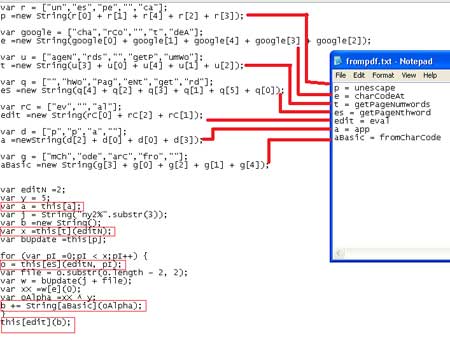 |
| |
At top level glance, the above code does
not provide much information about
vulnerability or exploit used in this PDF file. But because it was a
malicious PDF so I was sure that it is using some exploits. But the
question was how to retrieve that part. I searched for getPageNthword
and getPageNumwords because these were the only keywords that creating
some confusion to me. Hopefully I found some details that getPageNumwords will return the number of words in a page and
getPageNthword is used to loop through the words and manipulate them
based on parameters passed.
So from the above computation we can
say that variable 'b' store the results and this[edit](b) = eval(b) is
used to execute the javascript expression inside b. We can display
variable 'b' via
console functions (console.show() and console.println()). So by
replacing this[edit](b) with console.show() or console.println(b) we can
get the value of b.
PDFStreamDumper provide a Update_Stream feature to
update the PDF stream so we can easily make this change and can save it
into a another PDF file and after that PDF file should display content
of variable 'b' when opened. |
| |
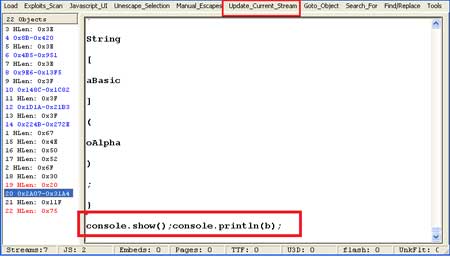 |
| |
| Here is the content of variable 'b' |
| |
| |
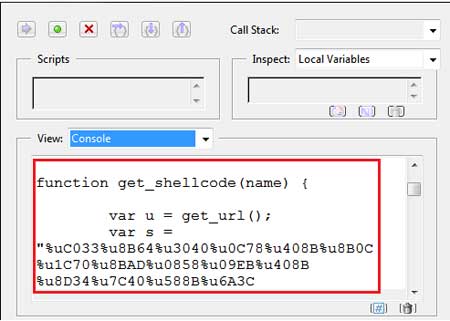 |
| |
| Here is the full dump of formatted script from this PDF file |
| |
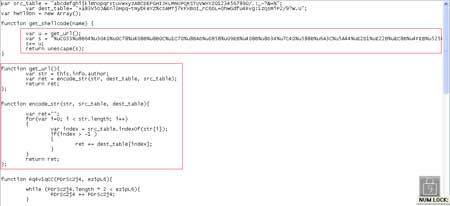 |
| |
| |
As we can see in the above picture that get_shellcode function first
calling get_url() function. so if we take a look to get_url() function
we see that it is using author name as a key to decode the url. But
variable 's' is also seems to contain some shellcode.
During my analysis I
found that shellcode try to execute a file named
"e.exe" from temp
folder. So we can say that the actual script first exploit the
vulnerability and then download the "e.exe" from the decoded url and
then execute that program. |
| |
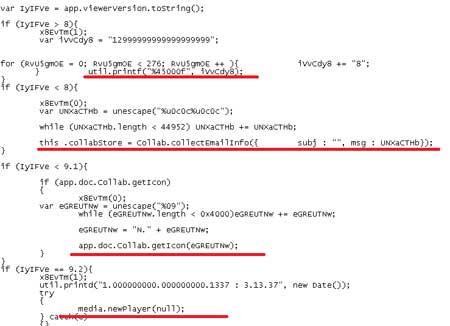 |
| |
| Red lines in the above screenshot shows the vulnerabilities
exploited by this malicious PDF file. |
| |
| |
| |
|
This article showcased how to identify hidden malicious script elements
within dangerous PDF file using PDFStreamDumper. For better learning it is
advised you to try dissecting sample PDF file using the mentioned tool.
|
| |
| |
|
-
PDFStreamDumper - Free tool for the analysis of malicious PDF
documents
- PDF
File Specification
|
| |
| |
|
|
|
| |
| |
| |
| |
| |
| |